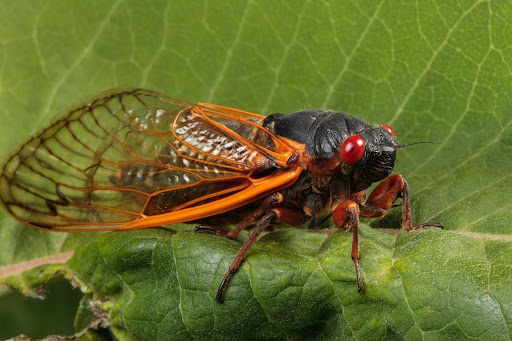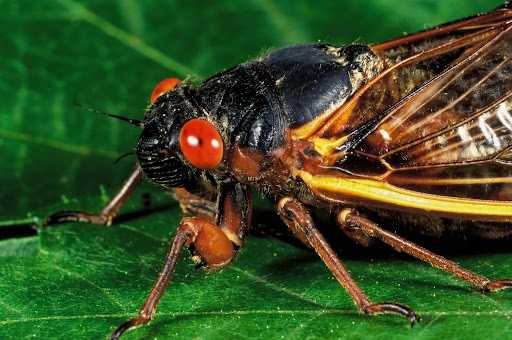Cicadas return every 17 years from their underground hideaways to terrorize the skies. Their beady red eyes and horrifying buzz are expected to wreak havoc on citizens in the Midwest this summer. Maybe you’ve already experienced these alien-like insects in past years, but this year is predicted to be the worst of the worst.

In a rare time cycle, two “broods,” or groups of cicadas, will align at the same time. According to NPR, these two broods haven’t aligned since 1803. The matching of these two groups means that billions, if not trillions, of these bugs will emerge at the same time.
“Their defense strategy is to flood the forests so that predators, from blue jays to squirrels (and, during these eruptions, everything in between), become so full that they literally can’t stomach another bite. That leaves plenty of insects to mate and lay eggs that will become the next generation of 17-year cicadas,” Vox’s scientist Benji Jones said.
Cicadas begin as eggs laid in trees and once they hatch, they fall to the ground and begin their hibernation. The insects survive by sipping on xylem sap that discreats from tree roots. After 17 years they emerge and return home to the trees that once cradled them.
This rare event can be seen as both a benefit to nature and also a cost. While most of the benefits seem minimal, they do make an impact on our environment. Even though cicadas are viewed as a pest, they eat mosquitoes which seem to be a bigger bother to most people.

Cicadas also serve as a primary component of birds’ and squirrels’ diets. However, when birds focus on cicadas as their main source of food, they leave other insects like caterpillars and other insects to cause damage to trees that the birds would normally keep in check.
Female cicadas can also damage trees because that’s where they lay their eggs. They slice fine cuts into twigs and branches on the trees and then lay their eggs in those crevices so that the eggs can grow off of the nutrients in the trees.
If you are hoping to stay as far away from these bugs as possible it’s important to avoid trees and densely forested areas, as well as pools. You might think you can stay safe from cicadas in the water, but if you have any sort of tree cover up above, there will be cicadas in the water.
Sure the pool filter might help keep them away, but it’s important to always check the pool water or else you just might end up with one of these colossal bugs in your hair while going for a refreshing swim.
If looking to cool off in the hot summer sun, your best bet would be the lake because there are minimal trees and the construction from the building of the boardwalk might help to keep the cicadas away.
Before the cicadas arrive, you should also check any holes in screen doors or any cracks in doors that cicadas could fit through. Protect trees and bushes with netting, foil tape, and also soft pressured water.

While it might seem tedious, it’s easy to wash the cicadas off of trees while watering plants and flowers outside. Cicada carcasses make great fertilizer but that fertilizer might stink up your backyard. You can collect dead cicadas and bury them under your garden to promote plant growth. Any other insect repellent should do the trick but these other helpful easy hacks will work just as well, and they are safer for the environment.
While the terrorizing effects of the cicadas seem long-lasting, these creatures will only be around for approximately two months before they die off.







